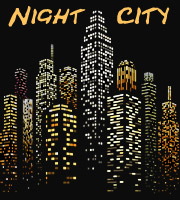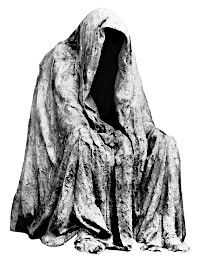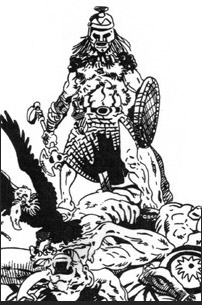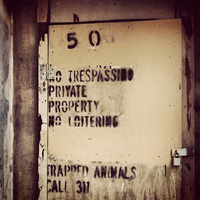In writing Ranger? there was a need to view and walk the ground. The various locations in Colorado I have worked, hiked and gone by train, stepping out to take a breath of the air when “fresh air stops” are called by the conductor. Missouri was a problem, having never been there.
I wanted to see the Ozark Mountains. My host, Paul, a farrier, provided me with an education on horses at our stops as he shoed them, and an education on the topography. As a boy and a young man, he not only walked this land, but talked to the old timers, who had been alive in the 1920s and 30s, with one old man recalling being attacked by a panther that ate his horse, as he was unarmed and helpless.
To my surprise, I found out that the Ozarks are the minor western range, that the larger range is the Boston Mountains. In outlining the three coils of Ranger?, I informed Paul that his hometown of Exeter, being my home base here, would certainly exist in Elder Earth, with an unaltered name, as Exeter Plantation, Exeter being a good English name. I then told him about the Voodooist invasion and the Song of Machete Boy Panther Roy, and asked if he minded his home town being overrun by a Haitian horde of cannibals.
He smiled, and next day, came home from his 14-hour driving and horseshoeing day with a route mapped out in his mind. This route will be expressed with a crude map of a pre-scientific kind. [1]
The Ozark prairie, or plateau, abuts to the north against the Ozarks, which are low, Pennsylvania type mountains of old shale, flint and limestone. The stone is fantastic for building, coming right off in slabs. The land has to be re imagined from what it has become under man’s deforming hand. The valleys are less deep and more narrow than once, due to industrial landscaping and clear cutting, with the soil filling the caves and the gravel filling the rivers and creeks that in many cases have been driven under ground. The mountains are three-feet lower.
The 400-year-old trees have been replaced by trees a third to half their original height and girth, of a partially introduced variety. Undergrowth is now thicker than in the natural state.
The moose, bear, panther, elk and bison are now largely gone, wolves extinct.
Paul has driven me six miles to the head of Butler Hollow, an old valley threaded by a dirt road, some 20-miles long. This takes one to Eureka Springs—many towns are named after the many springs. Numerous side hollows, like the one where Roaring River runs, would serve as traps for large bodies of men.
In open country, the flora would be opposite, with almost all land heavily forested. The Unites States was catastrophically deforested at the cost of some 2 million boys shipped here according to protestant efforts and non-Christian means over 200 years. A European-Feudal-Catholic rate of deforestation would have taken some 2,000 years to achieve the same effect.
Settlements would have been like Elicott City, Maryland and Eureka Springs, placed right on small swift rivers and large creeks for water power.
The Buffalo River is accessed form this rocky spring town, that would have served as the last bastion of the Knights of Saint George, via another 20 mile highland valley that threads through The Boston Mountains. This valley is accessed by crossing War Eagle Creek and is threaded by Kenner and Osage Creeks. [2]
The Bostons are higher, with the cliff faces ominous and various lightning strike burns having provided clearings in the past. The Knights would be tempted to erect castles on these heights. But extended communications without floatable rivers for supplies, a brief period of occupancy by pre-industrial standards, and the tribal and voodooist enemies as well as the extreme lethality of laboring in such conditions for the available woodcutters, as well as their propensity to runaway, would have retarded such schemes.
The soil is only rich in certain valley bottoms that have since been flooded to afford recreational bodies of water for wealthy Americans. The soil is best suited, when cleared, for grazing livestock. The thin top soil covers a red-clay base, the soil easily exhausted by grain cultivation. This clay and the shale and flint and limestone would result in some impressive, though necessarily small, cathedrals and castles and towers.
The original forest was predominantly oak: white, red, post and water oak, with maple, dogwood and a species I am calling locust. The pines and cane breaks have been introduced. The yard of the lonely house where I am staying is dominated by the ominous, twisted oaks. The forest of old would have been dominated by huge, twisted, branching oaks and populated by large black panthers and cougars, thought of in olden times as separate species of big cats. Such cats were a terror in forests with oak branches spreading twenty to 120 feet and more overhead, branches as thick as the maple trunks that now grow along these fence lines. A panther would be able to run for miles across the tree branches like a squirrel.
The many sheer cliffs and deep caves would have been rendered invisible from a distance by the lack of most current clearings and the great height of the forest. The spacing of the Ozarks is much lie Pennsylvania, with a quarter mile between the 500 foot humps of wooded rock. Some of the more westerly Ozarks are called “knobs” with bare tops like grassy mesas awaiting the drought. The land is well watered and wet with some deep treacherous cliff-face valleys.
The spacing of the Bostons ranges from an acre or two narrow like West Virginia to valleys more like the Rockies, spreading for up to five miles between higher hump-backed peaks that often have a rounded front something like a wooded buffalo jump further west. Mid April still brings frosty nights and chilling days.
Thus Awes South, in Wester New England would feature clearance patterns and wild life more akin to early Iron Age and late Bronze Age Europe, with some cleared river valleys interspersed among looming, and ominous primeval forests stalked by great cats and through which lumbering herbivores browsed and occasionally grazed. Soto’s feral hogs [3] would be as much a scourge as they are in the Modern U.S., but with fewer, larger boars, as natural predators, particularly wolves, would abound and the dense undergrowth of this second-hand scrub forest would not be present to shelter great broods of young pigs.
The Plantations would be medieval villages employing gardening to support a cattle-based, hay-farming economy, employing swineherds, goatherds, and shepherds as well. Grain would largely be shipped out of the Ohio Valley by the Knightly orders to feed the European need for bread.
The stations would be wood palisade stockades surrounding simple stone towers. Only the major centers, such as Saint George’s Cathedral, would approach High Medieval levels of architecture.
The tribal peoples who had not converted to Christianity, would remain formidable and also at times serve a valuable function as a source of scouts and as occupants of buffer zones. In the southern reaches, the French introduction of Africans on the Haitian model, would have resulted in a great demographic advantage to these peoples as well as a less severe technological disadvantage as uprising Africans faced in Cuba and Haiti in the 1700s and 1800s.
Overall, the lack of protestant and proto-protestant shipping to transport massive numbers of British Islanders, and the lack of merchant interests to promote English-African slave trading in North America, industrial consumption in England, and most importantly, a failure to develop the essential article of prosperity-based faith of protestant North America, which was comprehensive deforestation and lineal population growth at any and all costs, expressed by Thomas White in his Planter’s Plea, 1631, could well have resulted in a very Medieval America in 2031, that yet retained elements of the last American frontier west of the Mississippi.
…
Notes
-1. The piney woods, which would be kind to the Voodoo Hordes do not extend as far north as Little Rock, which is the end of major navigation into the interior. To portage dugout canoes is not reasonable. So a convergence of flotillas at Little Rock, which is the most northerly year-round Voddooist settlement and marks the deepest stroke of the knightly orders south into Voodooist territory, would necessitate an overland march of over a 100 miles, via more direct routes than modern winding highways. For tropical flat-landers to traverse the Boston and Ozark ranges would be a daunting task for fanatics, not a lightly undertaken foray by opportunistic raiders.
-2. Named after the Osage people, who were named after the superb bow-wood found in the region. The Buffalo and Elk River valleys were used for winter quarters by plains dwelling hunters.
-3. I have envisioned not one thing being different about the Spanish conquests in The Americas, than expressed in our own historical record.











